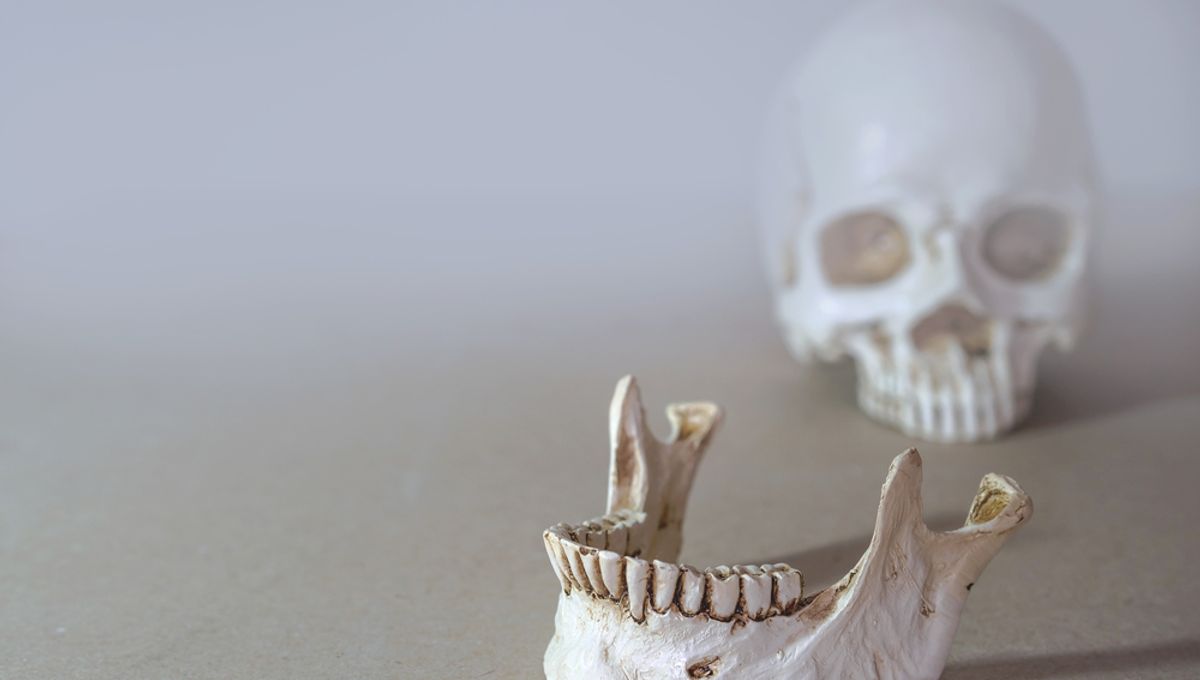
A 300,000-year-old human jawbone has been discovered in China with a curious mish-mash of traits belonging to both modern and ancient hominids. Analyzing the unique mandible, researchers say the owner of the ancient chops may have been an unknown ancestor of both modern humans and Neanderthals.
The nearly complete jawbone was unearthed in Hualongdong in East China, alongside a partial skull and a few leg bones. After conducting a detailed morphological and geometric assessment of the jaw, the study authors found that its triangular lower edge and general curvature resembled that of Late Pleistocene hominids and modern humans.
“However, the weak expression of all these features indicates that this mandible does not possess a true chin,” write the researchers. The absence of this feature places the ancient creature closer to older species from the Middle Pleistocene than to the likes of Kirk Douglas, John Travolta, or other noticeably chinned modern hominids.
“Moreover, a suite of archaic features that resemble those of Middle Pleistocene hominins includes pronounced alveolar planum, superior transverse torus, thick corpus, a pronounced endocondyloid crest, and a well-developed medial pterygoid tubercle,” write the study authors. Collectively, these characteristics are most reminiscent of the species Homo erectus.
According to the researchers, this mosaic morphological pattern has never previously been seen in a Middle Pleistocene hominid from East Asia, and suggests that modern human traits were beginning to appear in ancient species 300,000 years ago.
To make matters even more puzzling, the researchers found that the facial bones were even more similar to those of modern humans than the jawbone.
“Even though the predominantly modern human-like morphological features in the […] facial bones suggest that [the specimen] bears similarities to modern humans, the mosaic morphological pattern of the […] mandible revealed in the present study supports the complicated morphological diversity that existed in the late Middle Pleistocene hominin record in East Asia,” write the researchers.
Attempting to identify the species to which the remains belong, the study authors point out that other mosaic morphologies seen in China have previously been attributed to Denisovans. However, given the unique combination of traits observed in the Hualongdong specimen, the researchers speculate that it may belong to “a third lineage that is neither H. erectus nor Denisovan but one that is phylogenetically close to H. sapiens.”
“In this context, the population represented by [this specimen] could have some phylogenetic relationship with late Middle to Late Pleistocene hominins (H. sapiens, Neanderthals, and Denisovans) and share with them some of their features,” they conclude.
The study has been published in The Journal of Human Evolution.
Source Link: Curious 300,000-Year-Old Hybrid Jawbone Has Ancient And Modern Human Characteristics